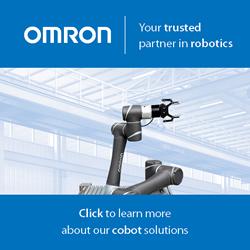IMTS 2014 - Flexible Honing Tools for Manufacturing: BRM Announces IMTS 2014 Results, Publishes Surface Finishing and Deburring Technical Article
Brush Research Manufacturing (BRM), American-owned supplier of flexible hones and industrial brushes, announces tradeshow success at IMTS 2014 and a new technical article about flexible cylinder honing for manufacturers. The industry standard for surface improvement and burr removal, BRM Flex-Hone® tools can be used for on-line or off-line operations in factories.
Los Angeles, CA September 17, 2014
Brush Research Manufacturing (BRM), global supplier of Flex-Hone® tools and NamPower nylon abrasive brushes, is announcing the completion of a successful week-long exhibit at IMTS 2014, Americas largest manufacturing event and one of the worlds largest industrial tradeshows. From September 8 to 13, the BRM technical team showcased Flex-Hone® and NamPower technology at Chicagos McCormick Place.
As visitors to the BRM Booth at IMTS 2014 learned, flexible honing tools help manufacturers to improve part quality and consistency. By improving surface finish and removing burrs at the same times, flexible hones also help industry to increase efficiency and boost productivity. "It was a fantastic show," said Heather Jones, Vice President of Marketing. "We had some great conversations with manufacturers."
How Manufacturers Use Flexible Honing Tools
As a follow-up to IMTS, BRM has published a technical article called How Manufacturers Use Flexible Honing Tools that explains why Flex-Hone® tools are the industry standard for inner diameter (ID) applications. Self-centering, self-aligning to the bore, and self-compensating for wear, flexible hones remove cut, torn, and folded metal while imparting a plateau finish for optimum lubrication.
Known also as ball hones, Flex-Hone® tools feature abrasive globules that are permanently laminated to flexible nylon filaments. These surface finishing and deburring tools are also built with a double-wire metal mounting stem. Manufacturers can use flexible cylinder hones during machine tool applications (on-line), or during secondary operations (off-line).
On-Line and Off-Line Operations
As BRMs technical article explains, flexible hones mount in most machine spindles. Examples include drill presses, lathes, milling machines, robotic cells, transfer lines, and CNC equipment. For off-line use, these cylinder honing tools can be used with a handheld power tool such as an electric drill. Regardless of how they are used, Flex-Hone® tools always require the use of a high-quality lubricant.
Flexible hones are used in both general industrial and specialized manufacturing applications. They come in 10 different abrasive types, 11 grit sizes, and in standard diameters ranging from 4-mm to 36". For hard materials such as ceramics, carbides, and aerospace alloys, BRM supplies the Diamond Flex-Hone® with its rapid cut rates and self-sharpening, resin-bonded crystals.
For more information about Flex-Hone® technology, download the Flex-Hone® Resource Guide.
About Brush Research Manufacturing
Brush Research Manufacturing (BRM), makers of flexible honing tools and a full line of industrial brushes, is located in Los Angeles, California. For over 55 years, BRM has been solving surface finishing challenges with brushing technology. BRMs Flex-Hone® tool is the industry standard against which all other ID surface finishing solutions are compared. Choose NamPower brushes for OD applications.
Featured Product

Discover how human-robot collaboration can take flexibility to new heights!
Humans and robots can now share tasks - and this new partnership is on the verge of revolutionizing the production line. Today's drivers like data-driven services, decreasing product lifetimes and the need for product differentiation are putting flexibility paramount, and no technology is better suited to meet these needs than the Omron TM Series Collaborative Robot. With force feedback, collision detection technology and an intuitive, hand-guided teaching mechanism, the TM Series cobot is designed to work in immediate proximity to a human worker and is easier than ever to train on new tasks.
